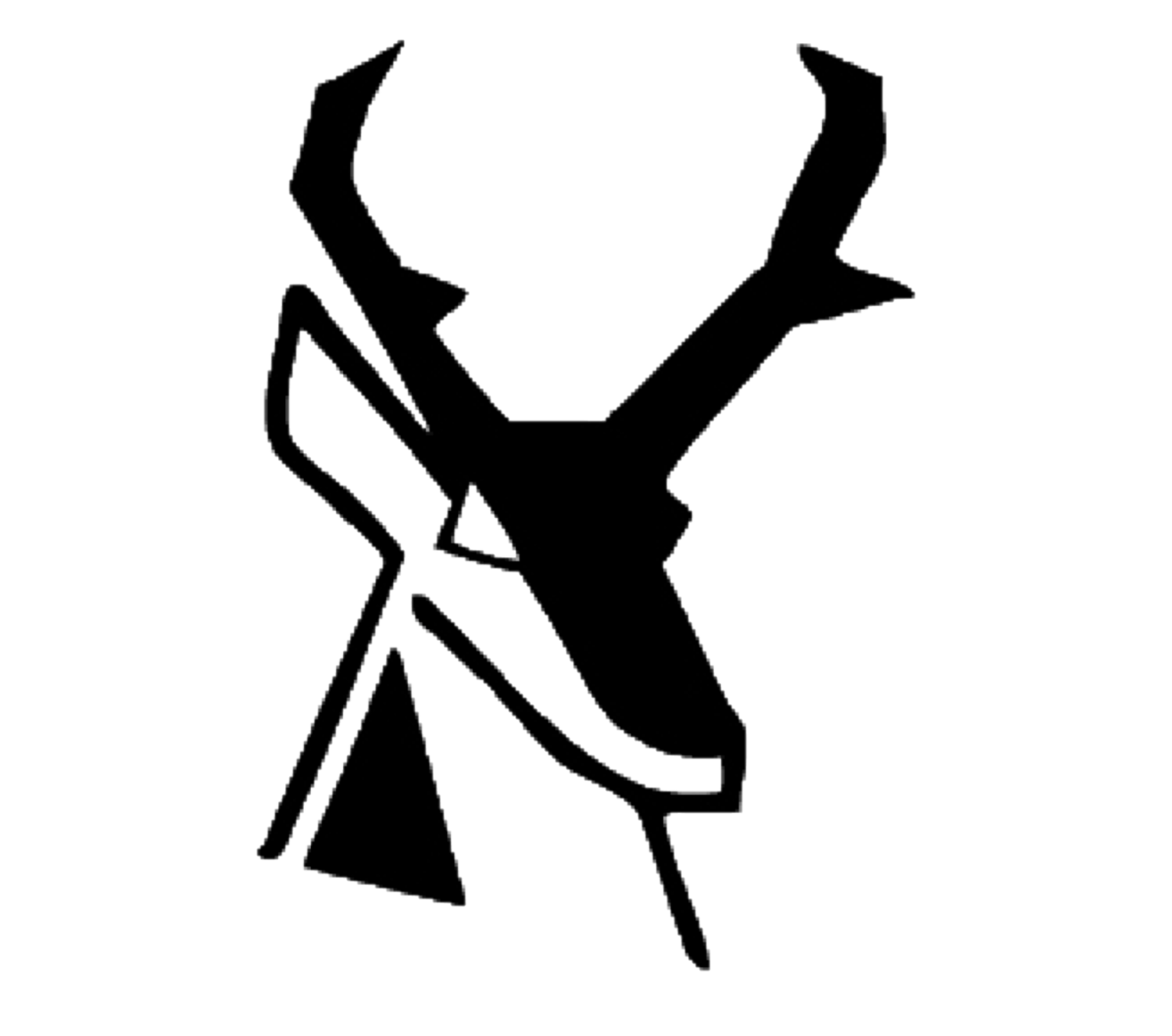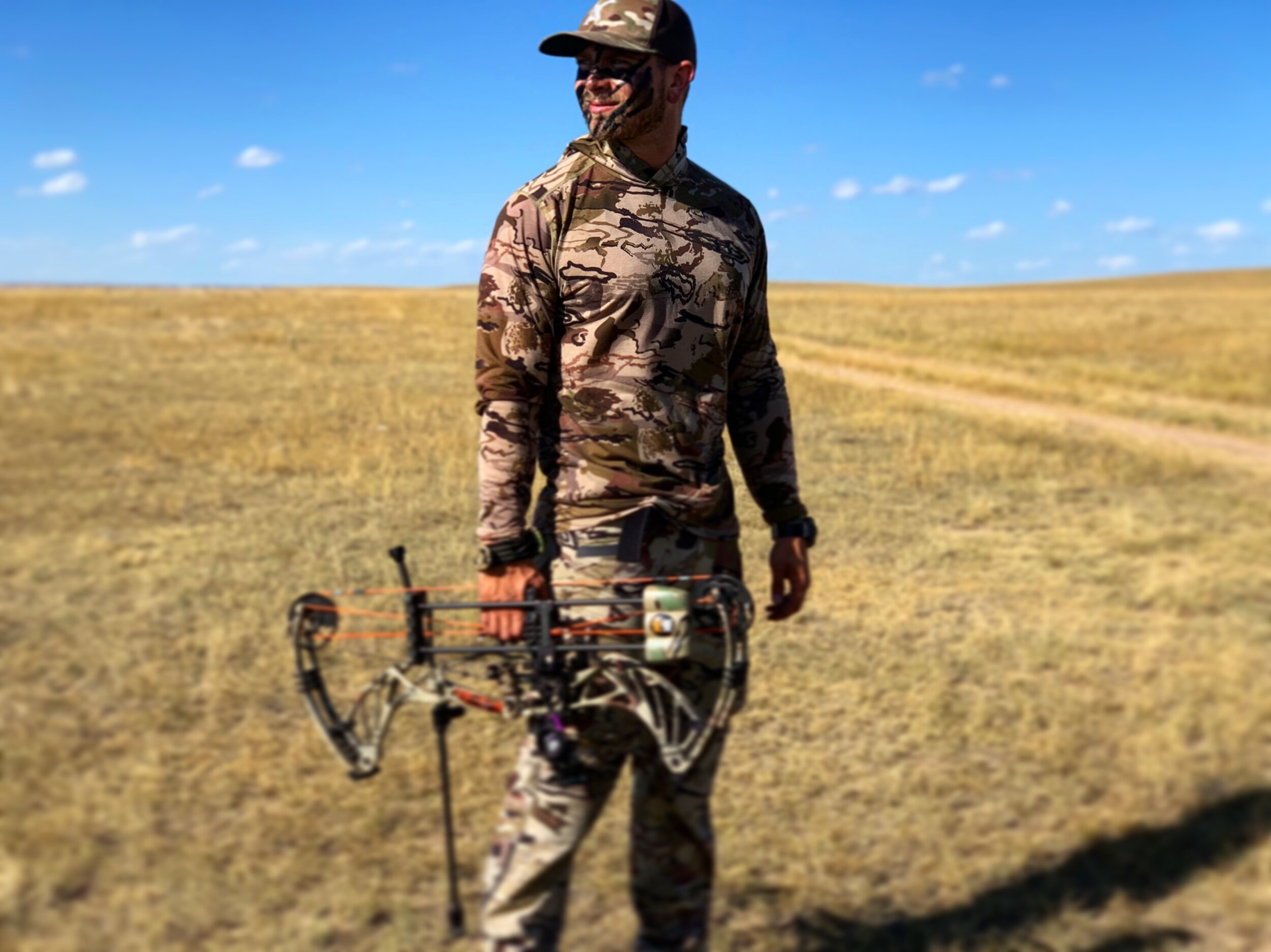The arrival of my 2019 archery season brought familiar feelings of excitement, anticipation, and joy as the sun rose on opening day. This year I had drawn a limited entry archery Pronghorn tag in a great unit, an archery mule deer tag, an OTC archery elk tag, and a NE archery either species deer tag. My schedule was full from mid August through late November. My pronghorn hunt provided multiple encounters, and even a few shot opportunities, but despite 16 days afield, I came home with an empty cooler. My mule deer tag was not a hunt I had budgeted much time for and with only a day and a half to hunt, it’s of little surprise that it also ended without success. Elk season was here, the last seven days of the season were mine to chase bugles in the wild, golden aspen sea of late September. After several vehicle problems, and next to no elk activity, the season came and went. Just like that, nearly 25 days of hunting had yielded nothing. One more hunt to go, this is the story of my first whitetail buck.
The voyage East from the foothills of Colorado to the heartland of rural Nebraska is now an annual tradition that I hold sacred. This being the third year I’ve been hunting our Nebraska properties, I decided it was time to hold out for a buck, eight points or better. The five hour drive was filled with conversation amongst friends, a time when we can let go of all the stress and weight of daily life from work, and civilization. The bright reds and oranges of a Midwest sunset now echo into the golden corn fields and pour onto the asphalt in front of us. Arriving at the farm around 10pm, our stiff muscles relax as our feet hit the gravel in the yard. The deafening silence is broken by a familiar voice, my buddy’s father in law, Jerry, calls out to welcome us. After lugging our excessive amount of gear into the house, we sit on the couch, taco beef on the stove, a traditional meal that tells us we made it. Whitetail season is here.
The farm
The farm is 640 acres, made up of rolling hills, and a dry river bottom filled with massive cottonwoods and juniper thickets. Both mule deer and whitetails call it home. Most years the property is surrounded with corn or soybean fields and often a section of winter wheat right in the middle, a perfect place to grow big deer, right? Well, one small detail seems to hinder that idea. Throughout most of the year, up until late October the property is leased out to cattle grazing. For some reason, the deer and cattle do not get along. The game goes like this: October 1, we head out to set cameras, observe sign, and hang a couple stands. October 31, check cameras, and adapt or add stands in reaction to the new intel. The problem is, until the cattle are off the property our cameras often are devoid of any deer. Lucky for us, we have a second property without cattle.
The view in front of the “two man” stand at Turkey Creek
Turkey creek is whitetail paradise, 100 acres of river bottom with CRP on each side. It has three established and proven stands in place all year, and any camera intel provided always harbors deer, often BIG deer! It is here that we focus our efforts until mid November. This year was no different, our first two trips out were focused on hunting Turkey Creek hard. I would sit in the “two man” stand. A 15 foot, two person ladder stand on the north end of the property. The stand faces north and is on the eastern edge of the river bottom, with CRP to the east and an old, overgrown road 10 yards to the west, right through the thick bottom. 50 yards in front of the stand is an active mineral lick and an often active scrape line, a deer highway through thick bedding area with feeding areas nearby. Plus with the additional space in the two person stand, it is very comfortable, often too comfortable as I find myself asleep frequently. Throughout the several trips, I had several encounters.
Whenever there is a northwest wind, this stand is perfect. The deer come through the thick bottom, hit the road, and walk right by the stand until continuing south to bedding. Several individual does, does with fawns, and a yearling buck all came by. One of the most memorable days I have ever experienced in the stand occurred on the second trip. A doe and fawn appeared out of the timber and wandered around the mineral lick. I stood, in the event there was a buck trailing them. As they made their way towards me, another three does came out of the thick stuff to the north, followed by eight more! Fawns, does, and one “excited” forky buck were literally right under my stand. The forky was practicing his rutting behavior until the unwilling doe would turn around and kick him. Two other does reared up on their hind legs and began kicking each other. Deer vocalization and behavior were on full display 15 feet below me. One doe even stopped to smell the ladder of my stand. Unfortunately no bucks showed up, so I was left with only a memorable morning in the stand.
That evening, after a midday lunch and nap, I returned to the stand. With little action, I was left to sit and absorb the silence, the sun now casting it’s rays parallel with the horizon and stretching the shadows into long and looming shapes in the timber. About an hour before sunset I saw a flash of brown in the timber in front of me. Getting to my feet and grabbing my bow, I was ready. An 8 point buck arrived on the road, hugging the edge of the trees, he passed in front of me at 21 yards. I hesitated to draw as there was no cover between the buck and I. As he passed behind a tree, I drew back. The buck turned and walked directly away from me for 15 yards, stopping at 30 to feed. Having been at full draw for over a minute I decided to let down and regroup. The buck continued walking, finally turning to the left and presenting a broadside shot. Approaching a tree I had ranged at 35 yards I let out a “MEH”, he didn’t stop, another one, “MEHH!”
The difficult shot I was presented with at 35 yards
He took another step and stopped. His vitals framed by a tree and an overhanging limb. I pulled through the shot and watched my nock illuminate a path right into the buck’s vitals. Having held low and watching the buck drop nearly half his body height, I knew the shot was lethal. He bounded away then stopped. I waited, listened, thought, recalled. Twenty minutes passed without a single sound. I climbed down from the stand and approached my arrow, upon arrival, I saw the buck, not 15 yards from where I had hit him! A feeling of uncontrollable joy flooded my body, and a sense of ease overcame my mind. I had provided a fast, ethical death to a beautiful deer who had tested my patience, stealth, and accuracy, a truly worthy adversary. After a prayer of gratitude and a clumsily taken photo, I drug the buck to the road and waited for my buddy Brandon to arrive. We would get the buck to the shed, hang him, and remove the guts. Two more days left to fill a doe tag and for Brandon to fill his tag passed without success. On the last afternoon we returned to process my buck before heading home.
The true look of joy when I found my buck
A great trip is certainly a successful one by definition, and for me, the success of a first whitetail buck is a valiant one. But the season prior to this notched tag was still a success, not in the sense of a full freezer or antlers on the wall, but because of the challenges and pitfalls I overcame. Maintaining a positive attitude through a difficult hunt will be rewarded, maybe not now, maybe not the next hunt, but it will come together one way or another. The time we spend afield is never wasted, but should be cherished and interpreted as a lesson. Each day amongst the trees, each morning we get to watch the sun slowly illuminate the forest, each evening we are allowed to listen to the silence of the wild is the most profound gift we as hunters can receive, and whether or not your tag gets punched is merely a bonus.
My first whitetail buck







